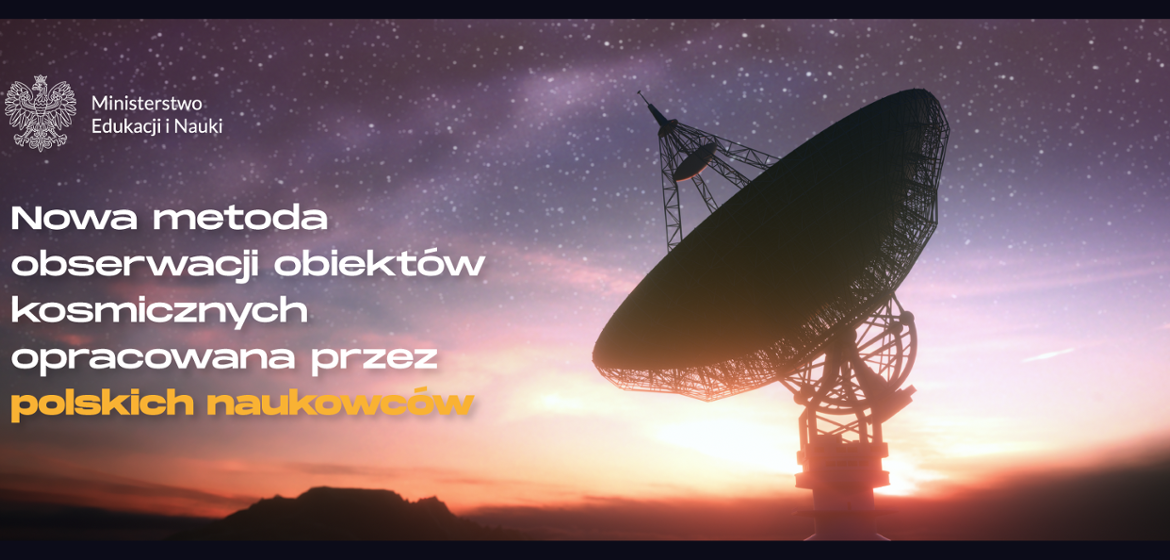A new method for observing space objects developed by Polish scientists
02/22/2022
Scientists from Warsaw University of Technology in cooperation with scientists from the Space Research Center of the Polish Academy of Sciences have developed a new method for observing space objects that does not require the use of specialized transmitters. It consists in quickly and accurately determining the locations of space stations, high-speed rocket satellites or the so-called space debris. The method can be used regardless of the time of day or weather conditions.

new way
The new method was developed by a team led by Prof. Konrad Jędrzejewski from the Institute of Electronic Systems, Faculty of Electronics and Information Technology, Warsaw University of Technology. The team observed the International Space Station (ISS) flight using the Polish receiving antennas of the International Network of Astronomical Radio Telescopes LOFAR (Low Frequency Array) and simple solutions based on publicly available commercial radio receivers. The accurate results obtained in cooperation with scientists from the Space Research Center of the Polish Academy of Sciences (CBK PAN) allowed the development of new methods of research in space, including the international system for tracking measurements of satellite motion.
Currently, to track the movement of satellites, active radar methods are used, which are based on massive antennas, using very high powers of the transmitted signal. Classical measurements with telescopes and measurements with laser techniques are also used, for example at the Astrodynamic Observatory of the Central Research Institute of the Polish Academy of Sciences in Borówiec near Pozna.
Beginnings of observation
The first observations of the International Space Station were carried out using radio telescopes included in the international LOFAR network, including those in Borówiec near Pozna, in 2020. The following observations were made using two Polish LOFAR radio telescopes located in Borówiec (operated by CBK PAN) and azach near From Krakow (owned by Jagiellonian University).
In subsequent experiments, conducted in December 2021, the infrastructure needed to make such observations was simplified. This time, the measurements were made using the LOFAR station in Borówiec and a commercial USRP radio signal receiver with a small antenna located in Otwock, which served as a reference signal receiver. The signal used in recent experiments to illuminate the International Space Station was that of the DAB+ digital radio transmitter located at the Palace of Culture and Science in Warsaw.
Plan ahead
The discovery by Polish scientists may soon find application in detecting threats from outer space that arise in Earth orbits. The results of their work aroused the interest of the Polish Space Agency, as well as radiolocation specialists from all over the world. The developed solutions and selected results of the experiments will be presented at one of the most important IEEE Radar Conference 2022 (RadarConf’22), to be held March 21-25, 2022 in New York.
Scientists also plan to build an airfield at the airport of Warsaw University of Technology in Przasnysz, as well as an airfield at the Astrogeodynamic Observatory of the Space Research Center of the Polish Academy of Sciences in Borówiec. It is planned to implement a new antenna field concept that increases the possibilities of observing objects in low Earth orbit, in connection with the possibilities arising from the characteristics of the antenna fields of the LOFAR station.







